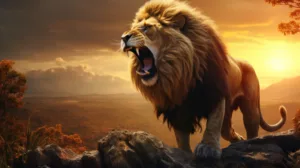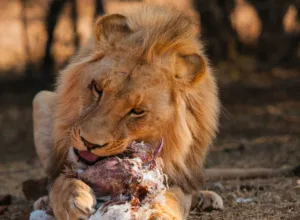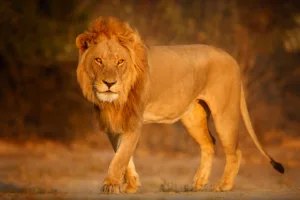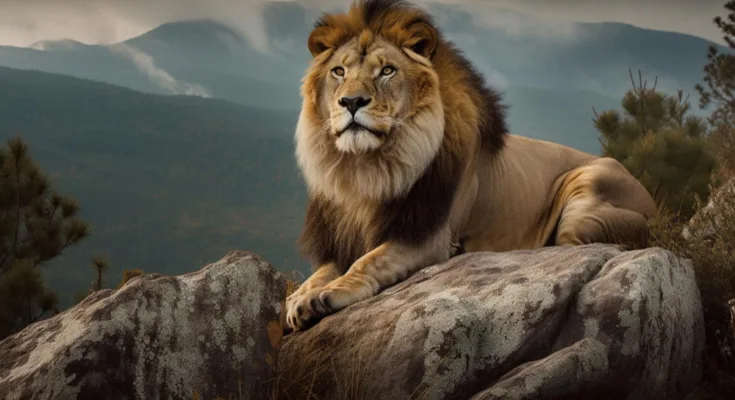Lions (Panther Leo), a species that has received endless adoration from people for such a long period of time, are an embodiment of spirit and bravery. Composing of a regal bearing, opulent anatomy, and unique mane, the lion is an interesting item of study. In this article we focus on the ten most fascinating things about these formidable big cats their habitat, behavior and unique qualities.
African and Asiatic Lions
Almost all wild lions live in Africa, only a few breaking off to live somewhere else. The distribution of the African lion (Panthera leo leo) goes to the south of Sahara desert while the last remaining population of Asiatic lion (Panthera leo persica) is in Gir Forest National Park in western India. It is exotic that the lions from western and central Africa are closely connected to the Asiatic lions of India, not to the ones from southern and eastern Africa.
Majestic Manes
One of the features that set males lions apart is their magnificent manes. These magnificent tuffs, which are up to 16 centimeters (6.3 inches) long, is the sign of dominance. Nevertheless, not all male lions have this splendid manes; there are some, called “maneless” lions, you can find in specific places like Tsavo National
Spotty Beginnings
Young male lions are born with rosettes and spots on their sandy coats when they begin life. As they grow, the markings that are characteristic of these large animals tend to disappear, revealing instead the recognizable tan color associated with these mighty animals.

Social Cats
Unlike other cats, lions live in social groups termed prides. Normally a pride is made up of about 15 lions (related females, cubs, and a male or a small group of males). This social organization allows them to undertake cooperative hunting and defend their territory efficiently.
Weighty Predators
The weight of male lions is about 30 stone (which is 190 kg or 30 stones), while in the case of females it is approximately 20 stone (126 kg). Their size and power play a major role in their capability to take down large game and defend their pride.
Water from Plants
The lion is an outstanding, adaptive species, able to live in hypothetical deserts like the Kalahari. Although their water is mainly supplied through the food that they eat, they also take water from plants like the Tsamma melon when available.
Big Eaters
Lions are voracious eaters. In one meal they can eat a maximum of 40 kg (that amounts to a quarter of their own weight) of meat. Their tongues are provided with sharp razor-like protrusions which helps them scrape meat clean from bones.

Hunting Tactics
Mainly night time hunters, lions incorporate their developed eyesight to hunt at night. On the other hand, they also hunt during the storms. The noise from the main predator, rain, and wind makes it more difficult for prey to detect, thus increasing their chance of success. While hunting, lionesses have their specialized roles, with some being the “center” and others as the “wing” to successfully take down prey.
Roaring Together
Lions are the only cat species in which lions roar together. The cubs of all ages participate with their mews. A group of lions, the pride, can often be heard roaring in unison to mark their territory, a roar which can sometimes be heard from as far as 5 miles away.
Life Expectancy
In the wild, lions live for about 10 to 15 years on average, while lions in captivity can live up to 20 years. They face the threat of extinction due to habitat destruction, thus, the conservation measures assume great importance.
Conclusion
The lion is no less majestic with its intricate social structure, and it is still a source of fascination to us, as it highlights the precarious equilibrium between might and fragility in the natural realm. By deciphering the mysteries of these marvelous beings, the importance of preservation and conservation of their natural dwellings lies in our recognition. The lion, with its regal air about it, continues representing the majestic nature of the wild world.

FAQs
Q: Are lions endangered?
A: Yes, lions are at present classified as “”Vulnerable”” by the International Union for Conservation of Nature (IUCN) . The population of these species has decreased to dangerously low levels due to habitat loss, human-wildlife conflict, hunting, and other factors.
Q: What is the responsibility of a male lion in a pride?
A: Primarily, male lions are the territory protectors of their pride, thus fighting off intruders from invading the territory. They also adopt a critical part in mating and guaranteeing the transmission of the lineage’s genetic heritage.
Q: How do lions communicate within a social unit of lions?
A: Lions use vocalization to communicate with other lions and it includes roars, growls and grunts. Roaring, on the other hand, is generally employed for territorial marking and signaling within the pride.
Q: Is a lions hunt alone or do they hunt in a group?
A: While lions can hunt on their own, they usually prefer hunting as a team, primarily when the target is big. In cooperative hunting, they enact a strategy that moves them a step closer to a killing a prey.
Q: What are the major drivers that affect lion populations?
A: The main threats for the lion populations are habitat loss as a result of human encroachment, humans kill for revenge, depletion of food sources and illegally wildlife trade. Current conservation management is focused on minimizing these threats in order to ensure the future existence of wild lions in the long run.




